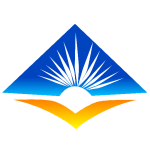The Teachers Service Commission (TSC) and Ministry of Education officials have kicked off countrywide inspection of schools.
The team which comprise of officers from the TSC County and Sub County Directors, Curriculum Support Officers, Ministry of Education County and Sub County Directors are on mission to check quality of education and facilities in schools.
Though the checklist focus much on readiness of Grade 9 classes, the team will also check on quality of sanitation, school staffing, teacher preparedness, teaching and learning materials among other stuff.
School Heads of Institutions (HOI) already put teachers on notice to prepare and avail the professional documents ahead of the visit.
Professional documents which teachers are required to prepare and ensure are updated include Schemes of Work, Lesson Plans, Class Attendance Register, Progress Record and Record of Work Covered.
School heads and deputies are required to have class attendance register and lesson observation forms to monitor teachers class work inline with teacher appraisal system.
School HOI’s are required to complete and submit to the TSC Sub County Directors a Performance Contract form inline with TSC regulations.
The inspection comes two weeks before schools break for half term. Schools will go for half term break on 25th February and resume on 2nd March 2025.
Knec had asked schools to register Grade 3, 6 and 9 learners in readiness for their national assessments.
The education officials will be checking on registration progress. Grade 3 learners are being registered for their first national assessment called KEYA (Kenya Early Year Assessment).
Grade 6 learners are being registered for their final assessment in primary school, KPSEA, before transitioning to junior secondary in January next year.
Grade 9 learners are being registered for their final assessment in junior school, KJSEA, before transitioning to senior secondary in January 2026.
KPSEA will start on 27th to 30th October 2025. KJSEA will start on 27th October to 6th November 2025.
In junior secondary the pioneer Competency Based Curriculum (CBC) cohorts will sit for their final assessment before joining senior secondary next year.
KJSEA will account for 60% of the total score while the School Based Assessment (SBA) done in Grades 7 and 8 will account for 40% for their placement in senior secondary.
Placement in senior schools will be based on pathways. Come 2026, the first CBC Cohorts will transition to senior school for a three-year study period that will cover Grade 10, 11 and 12.
At this stage, there will be three core learning areas that will determine learners’ career paths.
These are Arts and Sports Science, Social Sciences, and Science, Technology, Engineering and Mathematics (STEM).
The first core learning area has two tracks – Arts and Sports Science.
Under Arts, leaners will study Music and Dance, Theatre and Film and Fine Arts.
Under Sports Science, there is Sports and Recreation and Physical Education.
The first core learning area will accommodate only 15 per cent of all the learners nationwide.
The second core learning area (Social Science) will accommodate 25 per cent of all learners.
It has two tracks – Languages and Literature and Humanities & Business Studies.
Subjects under Languages and Literature are Literature in English, Indigenous Languages, Kiswahili/Kenya Sign Language, Fasihi ya Kiswahili, Arabic, French, Germany and Mandarin/Chinese.
Humanities and Business Studies include Christian Religious Education; Islamic Religious Education; Hindu Religious Education; History and Citizenship; Geography and Business studies.
The third core learning area (STEM) will accommodate 60 per cent of all learners and has three tracks -Pure Science, Applied Science and Technical studies.
Under Pure Science, learners will study Mathematics, Biology, Chemistry, Physics and general Science.
Applied Science has Agriculture, Computer Science and Home Science.
Technical Studies has Aviation; Building and Construction, Electricity, Metal Work; Power Mechanics and Wood Work.
The latest communication from the Kenya Institute of Curriculum Development indicates that Media Technology and Marine and Fisheries Technologies will also be part of the technical areas of studies that will be developed later.
The breakdown is the latest following a review by a technical working group appointed by the President to address concerns raised by parents and other emerging issues.
Regarding the placement of learners to Senior schools upon completion of Junior school in Grade 9, the Ministry of education said students that will undertake STEM subjects will all be absorbed in the former national schools.
Extra County schools will offer Creative Arts and Sports while Humanities will be offered across all county and subcounty schools.
On school capitation the National Treasury has so far disbursed sh 33 billion. It first released sh14 billion then an additional sh 19 billion after a week to primary, junior and secondary schools.
The Government Spokesperson Isaac Mwaura assured head teachers and principals that the remaining sh15 billion for this term will be released in due course.
The Kenya Secondary School Heads Association (KESSHA) had warned of school closures over delays in disbursement.
